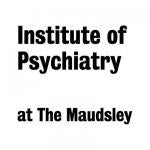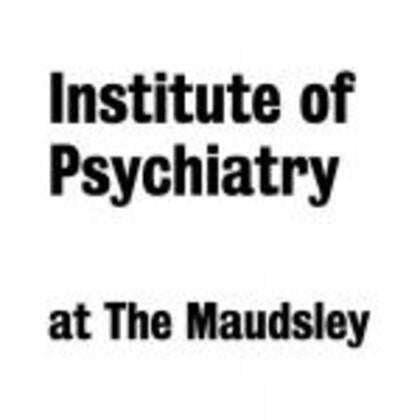Child Psychiatry
Share
- Details
- Text
- Audio
- Downloads
- Extra Reading
Our understanding of child mental health has changed over the years as attitudes towards children changed. Children are not solely immature adults who need protection and care; they have increasingly been seen as active, responsive agents who can develop mental illnesses from inside themselves.
Correspondingly, diagnoses such as depression, autism, dyslexia and ADHD have shown dramatic increases in the last few years. Is society creating more disorders? What has happened to parenting? Are diagnoses such as ADHD and autism really increasing? Are they real conditions or misattributions of ills in the schools and the families of modern societies? What can be done?
This is part of a special series of lectures in collaboration with the Institute of Psychiatry. The next in the series will be held on 5 May.
The Institute of Psychiatry provides post-graduate education and carries out research in psychiatry, psychology and allied disciplines, including basic and clinical neurosciences. The Institute is world renowned for the quality of its research and it became a school of King's College London in 1997.
Download Text
Child Psychiatry
Professor Eric Taylor
King's College London Institute of Psychiatry
3/3/2010
The whole idea of child "psychiatry" contains controversy. Is mental illness a good way of thinking about children's problems? Should psychiatrists be involved? Different views about the nature of the disorders can divide psychiatrist from psychiatrist, psychiatrists from social workers, and mental health from education. In recent weeks we have seen: disputes about the whole business of diagnosis arising from the publication of the draft for DSM-V (a revised classification scheme); scandals over autism and vaccination claims; a BBC apology about "Panorama" misleading the public on ADHD treatment; and grave worries about violent children and what has made them that way.
I will set out and criticise two extreme poles of the debate, with the chief example being that of how both are being applied to one very common condition in child mental health: "Attention Deficit/Hyperactivity Disorder". "Brainless" and "mindless" opinions are both being held and guiding practice.
At one extreme, ADHD is seen as a biological condition of the brain, resulting from genetics and the physical environment, based in cognitive changes and requiring physical (diet or drug) treatments and directive behaviour modification. There is evidence for this from neuroimaging, molecular genetics, and experimental psychology, and clinical trials.
At another extreme, ADHD is seen as a psychological variant rather than a disorder, with any problems deriving from societal intolerance; based in emotional changes and requiring supportive and educational measures. There is evidence for this from the great increases in prevalence over time, the very great differences between countries, the presence of emotional upsets and the inconstancy of changes in performance.
This lecture seeks to reconcile these poles for ADHD, and by analogy for other disorders that afflict children. Views about childhood disorders have developed with changing beliefs about childhood itself, and the latter need to be understood as the background to current concepts of mental disorder in childhood.
Rousseau probably began the modern understanding of childhood: for him, children are good by nature, curious and self-directing, rational from the age of 12 and need protection from a corrupting society. Through the 19th century attitudes fluctuated from idealising childhood to exploiting it. In 1800 most children in England were labourers; by 1900 most children were students.
In this context views of childhood disorder altered markedly. Early professional views (eg of Esquirol and his followers) regarded mental disorders as failures of reason, which could not apply to children as they were thought to lack reason anyway. Where disadvantage did not account for disturbed behaviour, psychiatrists thought that there must be an extreme constitutional cause. Contemporary accounts of cases can make difficult reading because of the extent to which the problems are seen as inherent in the child's personality and uncorrectable . They do nevertheless reflect enduring concerns - about the desperation of parents and educators and indeed the suffering children themselves.
Through the 19th century, in parallel with the emphasis on education, the early influences on children came to be seen as the foundation of adult character and health. Hoffman, the author of 'struwwelpeter', struck a child-centred note; Sigmund Freud's accounts of childhood experience argued that it was the antecedent of adult disorders. Twentieth and twenty-first century science has agreed, with longitudinal epidemiology, that most adult mental disorders have their roots in childhood; and has added the strong influence of genetic constitution.
It is conventional for historians of ADHD to begin with Heinrich Hoffman's great book 'struwwelpeter' - which translates as slovenly Peter, or Peter the slob. Indeed, several unwary historians have obviously not actually read it because they refer to it as a case history by a psychiatrist. In fact, and even though Hoffman was indeed a psychiatrist, it is much more interesting. It is a picture book for children which includes all sorts of catastrophes befalling children as a result of their own actions. One of them is "fidgety Phil" - who moves around so much that he brings down the dinner table and annoys his parents very much.
Plainly, this is not an illness. He might be restless but unimpaired- and the need to distinguish between the symptoms and their impact remains a living question for clinical science. But it does seem important to emphasise:
How wonderful the pictures are by contrast with typical representations of families in the first half of the 19th century.
And how interesting his picture of childhood is - children as active agents, making their own lives; and complex beings, in contrast to the age's contradictory and polarised views of children as angels or as savages. He mocking bourgeois convention, and allowing children to have their own taste for the macabre.
The next section of the usual historical chapter goes on to describe Frederick Still (the founder of paediatrics in England) as having characterised ADHD and started modern understanding. His descriptions of problem behaviour certainly overlap with ADHD, but do not give primacy to impulsiveness, overactivity or inattention. Rather, he aims to describe "defects of moral control" and the importance of his papers is that he is attributing defects to constitutional medical conditions in a rather retrogressive way, not to the "abstruse speculations" of psychologists. But I cannot find that his work did in fact have any influence. He is not cited by anyone until the late 1970s and early 1980s when hyperactivity research is taking off and writers (such as Ross and Ross and Schacher) look back and find early writings to help legitimise their late 20th century approach. His work reflects a view of the time that led to concepts of Minimal Brain Damage ( "MBD").
This idea had some undeniable strengths and flourished in the early 20th century. It emphasised cognitive processes and physical causes, at a time when thinking was very polarised and there were very influential professional groups prepared to regard all behavioural problems as reflecting emotional processes and psychological causes. Sociological critiques have insinuated that this was motivated by neurologists- desire for power and status.
Other critiques have suggested that "MBD" and "ADDH" were fuelled by drug companies, but I don't see the evidence. It is true that company advertising could be pretty crude, but i) it did not need, or rely on, physical aetiology ii) it was absent in the UK while ADHD rates were rising iii) the rise in drug research was funded by government agencies - especially NIH, not by companies.
But, MBD had both scientific and cultural weaknesses. It had corrected "brainlessness" - in Leon Eisenberg's words - but helped to create "mindlessness".
The modern heir is a neurobiological school of psychiatry with a strong commitment to medical treatment. It has some impressive successes in research, and impressive support from clinical trials for the value of certain medicines, especially central nervous system stimulants.
Genetic influences are known to be strong. A succession of comparisons between monozygotic and dizygotic twins has indicated heritabilities in the region of 70% to 90%. This is a high level of genetic influence, but it falls short of demonstrating that it amounts to an inherited illness. In present knowledge, the genetic effects do not seem to be bringing about a specific disorder of either hyperkinesis or ADHD. Rather, the genes act across the whole range of hyperactivity in the population, including the minor levels that are not associated with impairment. What is inherited, therefore, appears to be a trait rather than an illness. Furthermore, different components of the symptom complex may have somewhat different genetic determinants. Heritability is higher for hyperactive behaviour when it is combined with inattentiveness; impulsive behaviour in children who can concentrate well may have stronger environmental influences. Hyperactive behaviours at home and at school are multiply determined: some genetic influences are associated with a tendency to hyperactive behaviour in both settings, some only with one.
The presence of strong genetic influences in no way implies that environmental influences do not matter. The environment in which children live can be associated in several ways with the genetic effects:
First, there can be a passive correlation between genes and environment: parents make the environment of the child as well as transmitting their genes, so several aspects of the child's environment can be shaped by the continuing hyperactivity of the parents. Hyperactivity in the parents may contribute to making them antisocial; and it is known in other contexts that antisocial parents provide environments characterised by harsh and inconsistent reactions to children; and that these reactions are associated with the presence and persistence of antisocial behaviour in the children.
Second, there may be an active (or evocative) correlation between the genes and the environment: the children alter the behaviour of the parents and consequently the environment in which they live. Good evidence of this comes from the effect of medication upon children in placebo-controlled trials; when medication reduces hyperactive behaviour in the children, then there is also a significant effect upon the expressed emotion shown by parents towards the children. Parental negativity and coercion are influenced by altering the child.
The third way in which the environment may be important is through interactive effect with the genes: the expression of genes is different in different environments. In adoptive studies, for example, the risk for disruptive behaviour is increased if biological parents show a similar problem, and increased if adoptive parents do so; but the risk is greatly and disproportionately increased if both adoptive and biological parents show the same risk factors. The expression of the genetic endowment of the child is altered by the environment that is provided by the adoptive parents.
I therefore do not wish to convey a crude notion of a genetic illness whose manifestation has nothing to do with environmental influences. To the contrary, many environmental associations with ADHD are known, and will be enquired about in a full assessment:
In the pre-natal environment, exposure to maternal alcohol drinking and cigarette smoking; lead exposure, both in utero and in childhood; pre-natal exposure to certain drugs, including benzodiazepines and anti-convulsants; birth trauma , at least when severe - though in mild cases the association is likely to be mediated by other factors, such as social adversity and poor maternal (or grandmaternal) nutrition; major disruptions of attachment and other factors in the psychological environment ; and factors in children's diet.
The ways in which genetic and environmental factors can interact to alter behaviour are being researched intensively: there are important clues, but few conclusions that are stable enough to yield useful counselling. Some of the specific changes in DNA are being identified. Several genetic variants - for instance, in the dopamine (4) receptor and the dopamine transporter molecules - have been robustly associated with ADHD - but their effect size is small. Very recently there has been a remarkable success in identifying one spot on chromosome 16 as an associate of hyperactivity - and finding that a gene at that spot codes for a cadherin, which is crucial in the very early development of the brain - but even now it is important to remember that most children with DNA variants do not have ADHD; and most children with ADHD do not have any of the known DNA variants.
Several of the known genes are in the dopamine system. Positron emission tomography has shown low levels of dopamine in the striatum of the brain; and that stimulant medicine inhibits the dopamine transporter, with the consequence of increasing the amount of dopamine, and therefore enhancing the signal that is carried from one nerve to another. Magnetic resonance imaging has found that the brain size is often reduced and that certain structures (especially in dopamine-rich areas of frontal lobes and striatum) are altered disproportionately. These structures are of particular importance because in normal individuals they are activated during the performance of tests that involve the inhibition of a response - and under-activated in people with ADHD.
But if biological investigation has proceeded so well, how can this be compatible with the great differences between countries; or within one country at different times? I suggest that there are strong cultural influences, not on the neurobiological variation, but on the extent to which it leads to impairment or to disability. The twenty-fold difference in diagnosis and treatment between the USA and the UK is just one example of a great variation in apparent prevalence between countries. The greatest disparities appear when considering the rates with which conditions are diagnosed and treated in practice; and differences in recognition, cultural acceptance and professional practice can account for this. Epidemiological surveys also show substantial differences between nations, with prevalence rates varying from 1% to 19%; but the differences are attributable to methodological differences rather than differences between cultures . Rates are higher when rating scales are used rather than detailed interviews, when either parent or teacher ratings are used alone rather than in combination, when no requirement for impairment is included, and when DSM-IV is used rather than ICD-10. Allowing for all this, surveys indicate only small differences between nations; and ADHD should not be seen as culture-bound.
The differences between cultures in recognition and acceptance, however, are not just trivial nuisances in ascertaining a "true" prevalence rate. They emphasise that the extent of impairment is a function not only of the children but of the context in which they are growing up. A scholastically demanding culture, such as some of those in Eastern Asia, can make a level of hyperactivity/inattentiveness that is minor in international terms into a major impairment. The assessment of an individual child therefore needs to be culturally sensitive and understand the expectations under which they are living.
We have seen a massive increase in the diagnosis in the UK over the last 20 years - but the actual prevalence from epidemiological surveys has remained pretty constant.
There is, in short, no contradiction in accepting both a neurobiological basis and a strong social influence on the complex routes into developing impairment or becoming a case. Public and professional understanding can come together in promoting both the importance of helping the individual and that of creating cultures in family and school life that are friendly to children whose psychological development is not typical.
©Professor Eric Taylor FMedSci, Gresham College 2010
This event was on Wed, 03 Mar 2010
Support Gresham
Gresham College has offered an outstanding education to the public free of charge for over 400 years. Today, Gresham College plays an important role in fostering a love of learning and a greater understanding of ourselves and the world around us. Your donation will help to widen our reach and to broaden our audience, allowing more people to benefit from a high-quality education from some of the brightest minds.


 Login
Login







